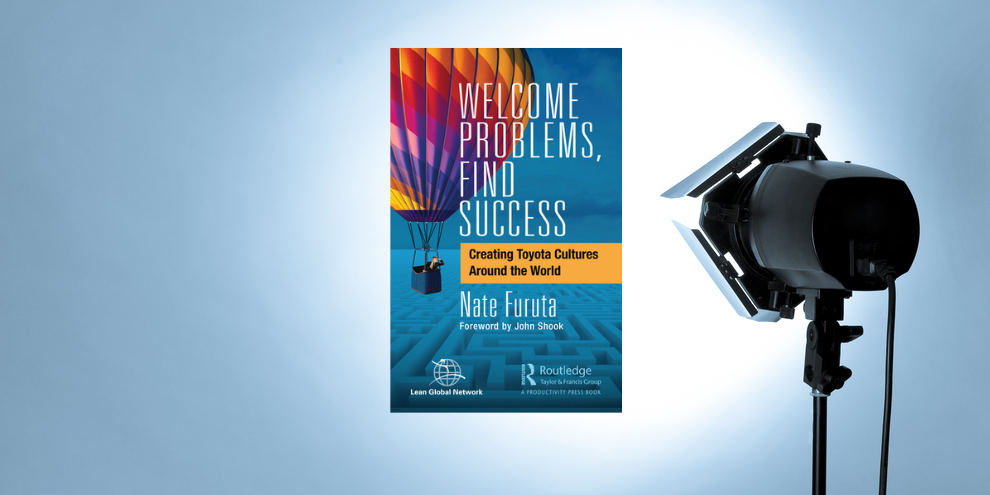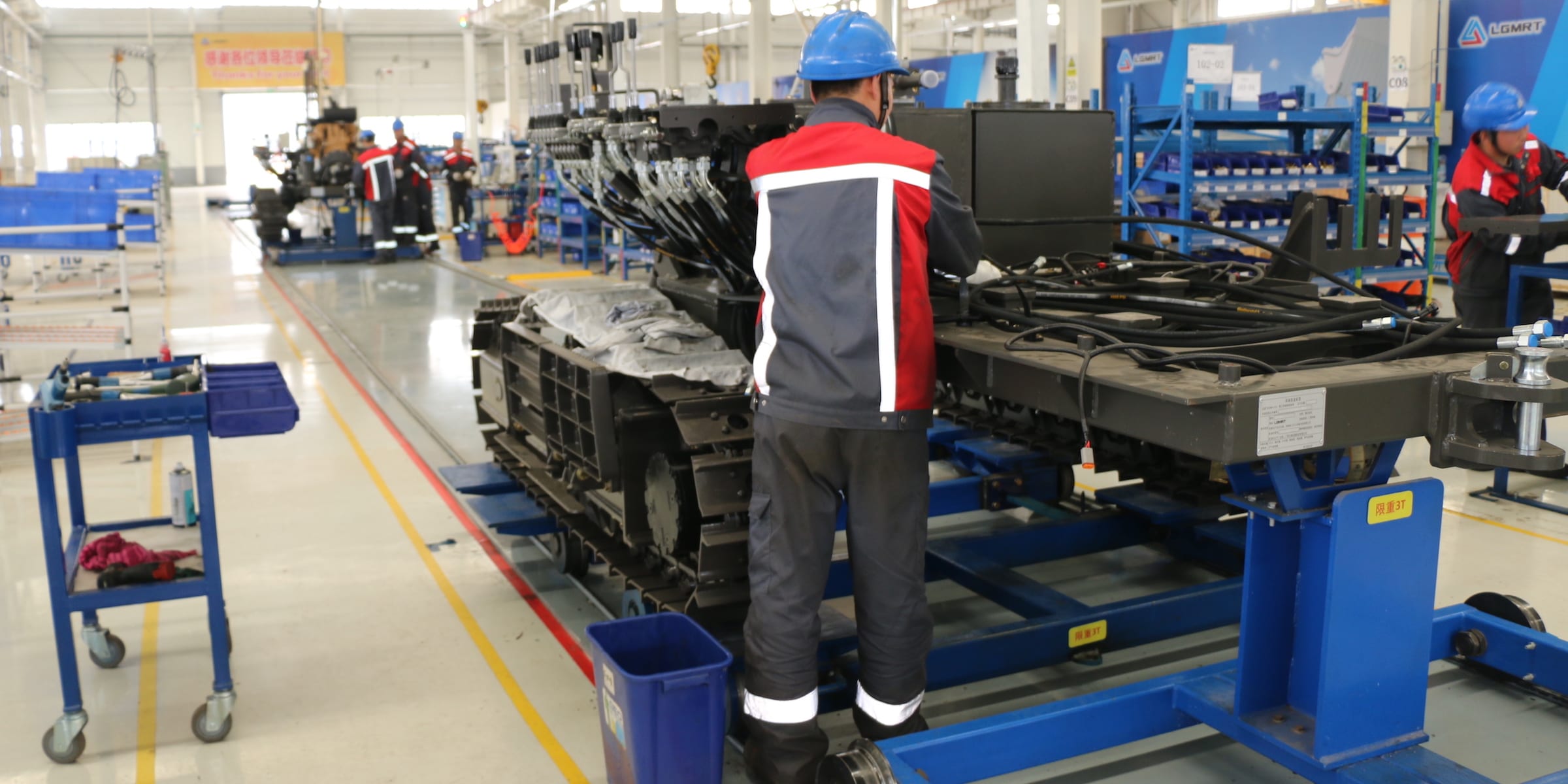
The iron law of scale-up
FEATURE – As our social systems grow, we need an effective way to manage them. This makes bureaucracies an inescapable part of life for our society and businesses. But how can we mitigate their negative effects?
Words: Michael Ballé, lean author, executive coach and co-founder of Institut Lean France
What is the problem you are trying to solve? This is the first question of lean thinking. In many cases, it’s also the hardest. We all tend to be clear on the solutions we want to apply, rarely on the problem we want to solve. The same is true of lean as well: what is the problem lean is trying to solve? It’s easy to get frustrated with the myriad interpretations of “lean”, although, in fact, different people are trying to solve very different problems and therefore interpret the lessons of Toyota in very different ways.
What can we learn from Toyota? The truly astounding mystery of Toyota is that 80 years after the just-in-time system was conceived by Kiichiro Toyoda, the company continues to rely on and develop what has become the Toyota Production System to remain both the dominant player in the automotive industry and the most profitable by far. As far back as 1934, when the Toyoda Automatic Looms company was considering setting up an automotive division, Kiichiro Toyoda, Toyota’s founder, turned down government help on the basis that it would interfere with cost-cutting efforts. He was opposed to subsidies and barriers to market entry which could impede self-help efforts.
Indeed, his own father, Sakichi Toyoda, had been very impressed by the first self-help book every published, Self-Help by the Scottish writer Samuel Smiles. In 1860, this reformist journalist had unexpected popular success with a self-published book extolling knowledge as one of the highest human enjoyments and education as the journey – more like a bumpy road – along which knowledge is acquired. He proposed that where education was not provided, a man had a duty to educate himself, and then went on to describe all the cases where self-education had propelled disadvantaged nobodies to fame and fortune. His radical claim for the times was that even the poor could become gentlemen, regardless of rank and riches. In 1870 a Japanese version of the book, Saigoku rishi hen, became a bestseller in the Meiji era, selling over one million copies.
Sakichi Toyoda, himself a self-taught engineer, was greatly inspired by the book and Toyota still holds his original, annotated copy. At a time where Taylor’s scientific management ideas of engineers decided on the “one best way” and made workers comply mindlessly to the process, Toyoda was embarking on a completely different project where every worker that joined him was expected to study, participate and contribute to product and production improvements. This built the constant need for reform into the company’s DNA: learning and changing to adapt to shifting market conditions, and the encouragement of every worker to participate in kaizen – small step improvements – as the method to do so.
This is a radical innovation. Every human group, since ancient Sumer to today’s unicorns, has reinvented some form of bureaucracy to cope with size. Bureaucracy is a form of administration that hinges on three core elements:
- Rules: as groups grow beyond natural family size of about 30 and clan size of about 150 to 300 people, they establish impersonal rules everyone has to follow in terms of process to coordinate specialization, procedures within a specialty and regulations to administrate the whole.
- Roles: impersonal rules require impersonal roles to be sustained, which define who decides what and who enforces what on whom. Roles are organized through a hierarchy of command-and-control, or decision-making and enforcement, and each bureaucracy develops arbitrary rituals to represent and reproduce these roles.
- Rewards: differentiated roles create a natural ladder of influence, and so humans will spontaneously compete to climb it. Bureaucracies being rule-based constructs, they eventually develop elaborate pay and promotion rules to codify progress through the ranks. Promotion rules that are endlessly side-stepped by either ambition or influence, and thus lead to the development of… more roles and rules.
Bureaucracies are, so far, the only known way to coordinate large groups of people on a common purpose – digital connectivity offers new avenues to come up with non-bureaucratic coordination, but for the moment nothing conclusive. The “Wikipedia has cancer” article shows that even institutions devoted to side-step bureaucratic control of knowledge develop their own bureaucratic problems.
Bureaucracy is necessary to deal with scaling up numbers, but it has one main drawback: it unavoidably concentrates power at the top, and keeps doing so no matter what mechanisms are put in place to compensate – the realization that led the founding fathers of the US government to try for independent agencies and checks and balances in government because they intuited that any form of government would, in the end, reproduce the very thing they’d fought during the American revolution. Concentration of power mostly happens at the top of functional units creating silos – independent sections that see their success as competing for budgets and decisions with other functional units rather than the overall purpose of the organization, generating the well-known turf wars we’ve all experienced, that can lead to the very demise of the body as a whole.
Bureaucracy is not a bad thing in itself. Bureaucracies can evolve into enabling bureaucracies with a healthy command structure and effective collaboration in order to achieve overall goals. In an enabling bureaucracy, each person feels they understand what is required of them (and why: they agree with the purpose and see their impact), have the means to do the best they can and feel they can contribute through ideas and initiatives. Bureaucracies can also evolve into red-tape bureaucracies where everything is absurd, nothing makes sense of work and people distance themselves as much as they can from their work as well as being miserable because of what they’re asked to do or have to endure. Driving bureaucracy into one way or the other largely depends on the leader’s ability to command and create a positive work culture. In general, though, the natural state of any bureaucracy is red tape: mindless processes and endless jockeying for influence over meaningless decisions, with large-scale expensive and arbitrary modernization programs.
And enabling bureaucracy is focused on collaboration and coordination. A red tape bureaucracy is obsessed with compliance and competition. Red tape bureaucracies will:
- Enforces processes at the expense of customers: users are offered a basic service that disregards their specific requirements and ignores its own disfunctions, as we’ve all experienced with most train companies.
- Demands functional loyalty over collective purpose: employees in each function are expected to first be loyal to their boss and, second, to the function’s culture regardless of what the organization does as a whole and what customers expect of it.
- Promotes enforcement over talent: people are picked for loyalty and their ability to enforce bosses’ commands over working teams, rather than for their insights and initiatives on how to do a good job in changing conditions.
- Defend past decisions and sunk costs: as they are promoted for loyalty and punished for disloyalty, middle managers keep defending previous past decisions and fighting against resources reallocation, which is typically experienced as “resistance to change” but is in fact driven by the culture encouraged from the top.
Red-tape bureaucracies do evolve, mainly when a new leader comes in, through extensive reform programs that often address the wrong problem and do as much damage as good in the change process. There are endless examples of reform programs that don’t lead to much or sometimes even kill the very patient they were trying to save.
The iron law of scale-up goes as follows: when a start-up hits the sweet spot with customers, demand grows suddenly and fast. Resources are brought as to deliver the service or product, and when an early critical mass is reached, the need for bureaucracy asserts itself. As the bureaucracy starts working, so does the concentration of power in functional departments. This generates:
- Slower response to individual customer needs as processes are established to deliver a standard, mass-market product or process.
- Rigid allocation of resources trough the budget process and growing costs due to increasing coordination and control needs.
- Disengagement of employees as they can see that what they’re asked to do is absurd and as they’re managed by fear and compliance by authoritarian managers.
According to Gallup studies, only 26% of US workers feel their organization always delivers on the promises it makes to customers, and only 27% of employees strongly believe in their company’s values.
What makes bureaucracies so effective at size coordination are the very mechanisms that make them unresponsive to market needs and increasingly costly and unwieldly. Concentration of power at the top of functional departments creates incessant pressure to fund departments while decreasing cross-functional coordination.
At this stage, leaders often react in a bureaucratic way: they create new rules and processes to try and control cross-functional coordination, which, in turn, makes the problem worse as it adds new power players and new constraints to the actual work. They also tweak the reward systems to make people work harder on their individual objectives, thereby increasing internal competition and strife. Embroiled in internal politics, the organization both misses the boat on new offers to satisfy customers and develops a toxic culture of employee disengagement.

If leaders fail at revitalization, finding new value to offer customers, the next leadership team tends to focus on cost control and then cost reduction, thus further alienating customers and employees and eventually driving the business into either bankruptcy or irrelevance.
This is an iron law because the forces at play will always be there – there is no escaping “big company disease,” as Toyota terms it. This is a natural effect of growth. Predicting when and how it happens is impossible, but the fact that it will happen is a certainty.
Which is why Toyota’s enduring success is such an intriguing mystery. Big company disease is the problem lean is meant to solve – not fixing operational processes or reducing spot costs. To counter the iron law of scale-up, Toyota has come up with three radical innovations: just-in-time, jidoka and kaizen.
The “sell one, make one” imperative of just-in-time keeps the organization focused on what customers actually purchase and bringing in the right materials to deliver it. This just-in-time principle was formulated by Kiichiro Toyoda as early as 1938: “I believe that the most important thing is to ensure that there is neither shortage nor excess, that is, to ensure that there is no excess labor and time for the designated production. There is no waste and there is no excess. It means not having to wait for parts to be circulated around. For Just-in-Time, it is important that each part be ready 'just in time'. This is the first principle of increasing efficiency.” This just-in-time principle became fully realized when Taiichi Ohno developed and perfected the supermarket method of pulling parts through kanban signals. As the technique was applied through the network of suppliers, it gave the company a disruptive tool: a microscope to observe the allocation of resources in real time.
By pulling parts truck by truck on an hourly basis from its suppliers, Toyota can immediately spot problems and question its allocation of resources in a way that flows from customer demand rather than from functional budget allocation.
The second radical innovation that complements just-in-time grew out of Sakichi’s Toyoda invention of devices to stop production rather than make defective parts. Stopping at every problem and correcting it immediately turns the hierarchical imperative on its head. Rather than a chain-of-command, the line hierarchy has to become a chain-of-help, supporting teams and team leaders to keep the just-in-time running system. In any Toyota plant we can see the just-in-time stopping for any reason, which starts a call signal, that grows louder until all the hierarchy, up to the plant manager, comes to see what is really happening and help.
This gives every operator the power to stop the entire plant if something is not right. Just-in-time is a technique to keep the organization focused on delivering to customers exactly what they ask for. Jidoka turns the hierarchy’s orientation around from a power base for functional leaders to a support base for operational teams.
Thirdly, the kaizen imperative of improving through the voluntary participation of all employees in small-step improvements, supporting these improvements through the hierarchy, and only then leading to larger changes, redefines how the organization reforms itself – from detailed technical needs rather than top-down power plays. The intent to encourage kaizen gives unusual importance to front-line team leaders who must support their teammates in understanding the work (standards) in order to propose improvements, test them and convince their colleagues (kaizen).
As yet, no one has found a way to grow a business without building a bureaucracy, and bureaucracies will concentrate power, rigidify processes and steer focus away from customer satisfaction towards internal fights for resources and influence. This is the iron law.
Toyota pioneered remedies to mitigate this iron law, but for them to be effective they need to be understood as a system:
- Orientation towards the continuity of customer satisfaction – monitoring constantly customer purchases and complaints to encourage bad new first and look at the blockages in the flow of value that will require collaborative problem solving.
- Just-in-time supply of materials and information through pulling with kanban in order to constantly challenge how appropriate the current allocation of resources is and establish better partnerships for responding more flexibly to market and environment changes.
- Jidoka response to minute process mishaps in order not just to ensure flow but to better understand the “buds of problems” – where new problems might grow in future failures, and, in doing so, turning the chain of command into a chain of help for the front-line operators that truly add value to customers.
- Teams, led by competent team leaders, are the true actors of change as they explore and invent how to improve technical, not organizational processes through studying standards and kaizen, and are helped to follow-up with changes in procedures by their management structure in the tradition of self-help.
Not fully grasping the problem lean was meant to solve can end up in large-scale misunderstanding and, rather than clear up misconceptions, further increase confusion about the role of bureaucracy and the spread of big company disease.
Toyota Motor Company was founded in 1937, in a by-gone era. Today’s start-up entrepreneurs can easily believe that technology has changed to such an extent that issues from the previous century no longer apply. This is not so – the iron law of scale-up doesn’t stem from technology, but from how humans naturally organize themselves in large numbers from ancient Mesopotamia to the present day. Rituals and customs change, the mechanism remains the same. The lean system doesn’t replace bureaucratic need for rules, processes and promotion. It orients them in a different way to create the conditions for sustainable growth through on-going customer orientation and a healthy command structure and organizational culture. Lean doesn’t invalidate the iron law of scale-up, but it offers an antidote.
THE AUTHOR

Read more


FEATURE – The author shares his thoughts about the thinking that informs Uri Levine’s book and explains why this is perfectly align with a lean mindset.


INTERVIEW – PL meets the author of the recently published book Welcome Problems, Find Success, who discusses bringing lean to different cultures and changing managerial behaviors.


FEATURE – Leading lean transformations in different countries is often considered a challenge. The author claims it’s not as difficult as normally assumed, so long as you stick to the lean fundamentals.


FEATURE – In a transformation, should we spread responsibilities across the business or go for a centralized Lean Office? For their second piece, our Polish colleagues look at what they have learned on the field.

